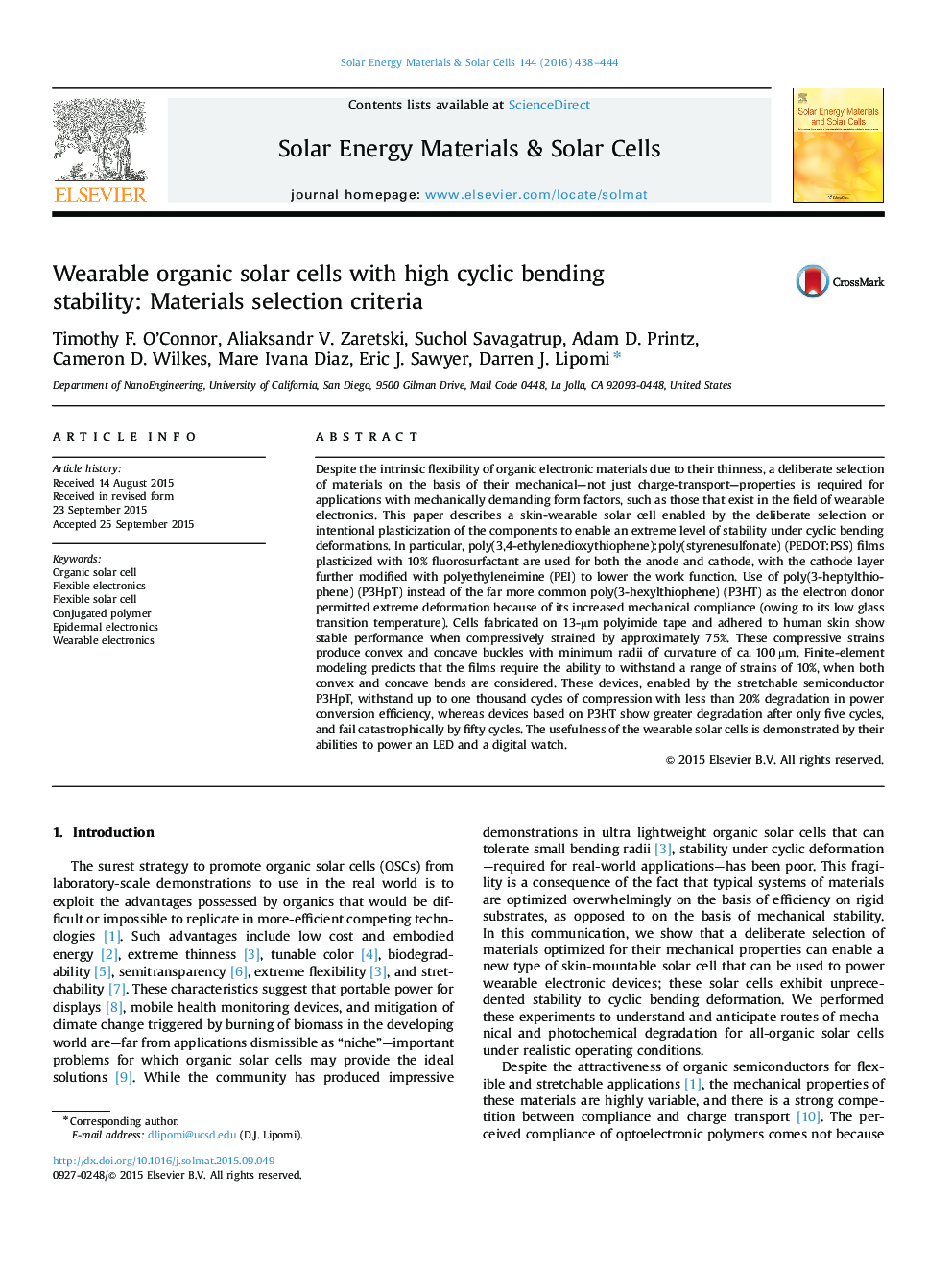| Article ID | Journal | Published Year | Pages | File Type |
|---|---|---|---|---|
| 6534937 | Solar Energy Materials and Solar Cells | 2016 | 7 Pages |
Abstract
Despite the intrinsic flexibility of organic electronic materials due to their thinness, a deliberate selection of materials on the basis of their mechanical-not just charge-transport-properties is required for applications with mechanically demanding form factors, such as those that exist in the field of wearable electronics. This paper describes a skin-wearable solar cell enabled by the deliberate selection or intentional plasticization of the components to enable an extreme level of stability under cyclic bending deformations. In particular, poly(3,4-ethylenedioxythiophene):poly(styrenesulfonate) (PEDOT:PSS) films plasticized with 10% fluorosurfactant are used for both the anode and cathode, with the cathode layer further modified with polyethyleneimine (PEI) to lower the work function. Use of poly(3-heptylthiophene) (P3HpT) instead of the far more common poly(3-hexylthiophene) (P3HT) as the electron donor permitted extreme deformation because of its increased mechanical compliance (owing to its low glass transition temperature). Cells fabricated on 13-µm polyimide tape and adhered to human skin show stable performance when compressively strained by approximately 75%. These compressive strains produce convex and concave buckles with minimum radii of curvature of ca. 100 µm. Finite-element modeling predicts that the films require the ability to withstand a range of strains of 10%, when both convex and concave bends are considered. These devices, enabled by the stretchable semiconductor P3HpT, withstand up to one thousand cycles of compression with less than 20% degradation in power conversion efficiency, whereas devices based on P3HT show greater degradation after only five cycles, and fail catastrophically by fifty cycles. The usefulness of the wearable solar cells is demonstrated by their abilities to power an LED and a digital watch.
Keywords
Related Topics
Physical Sciences and Engineering
Chemical Engineering
Catalysis
Authors
Timothy F. O'Connor, Aliaksandr V. Zaretski, Suchol Savagatrup, Adam D. Printz, Cameron D. Wilkes, Mare Ivana Diaz, Eric J. Sawyer, Darren J. Lipomi,
